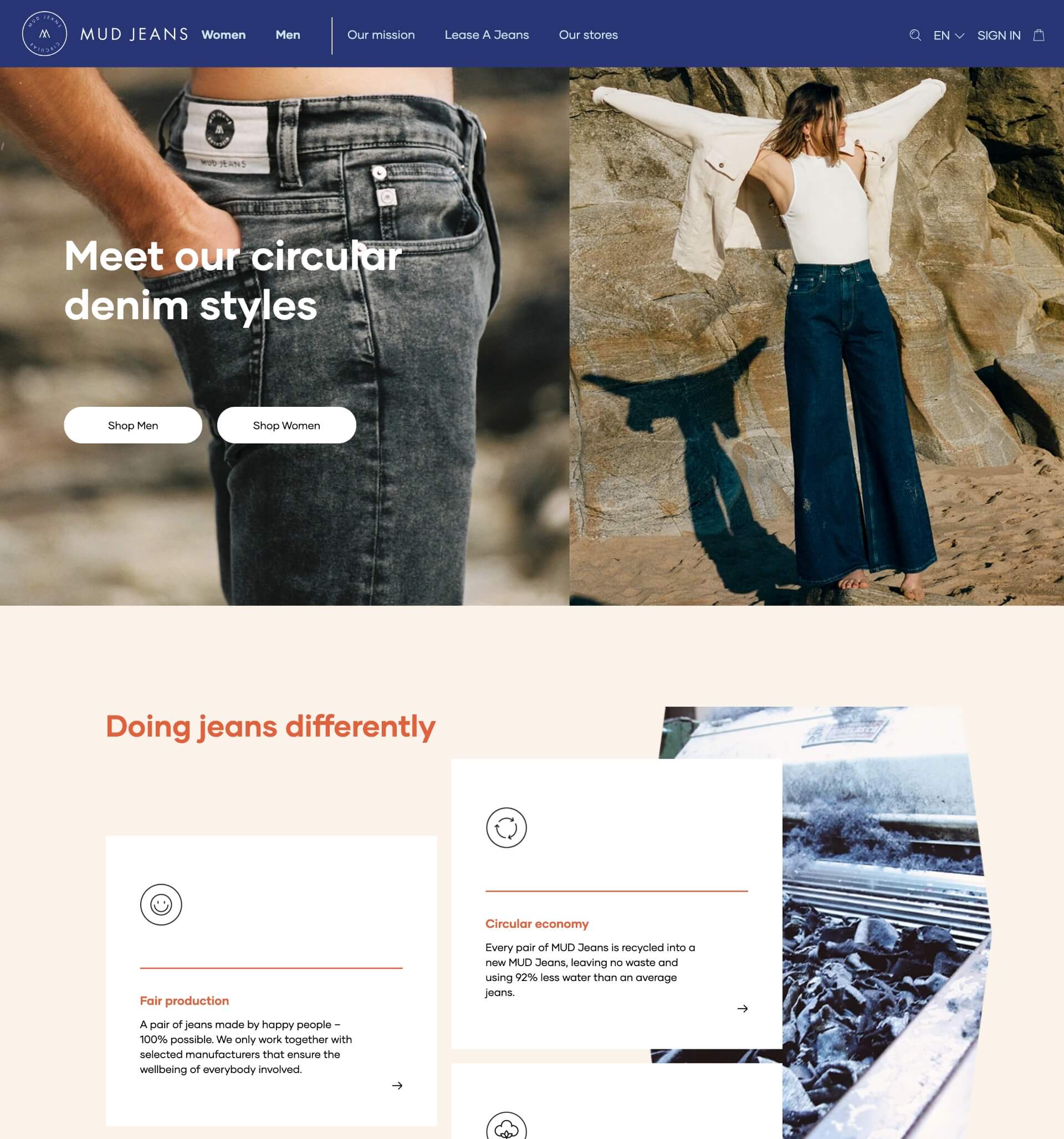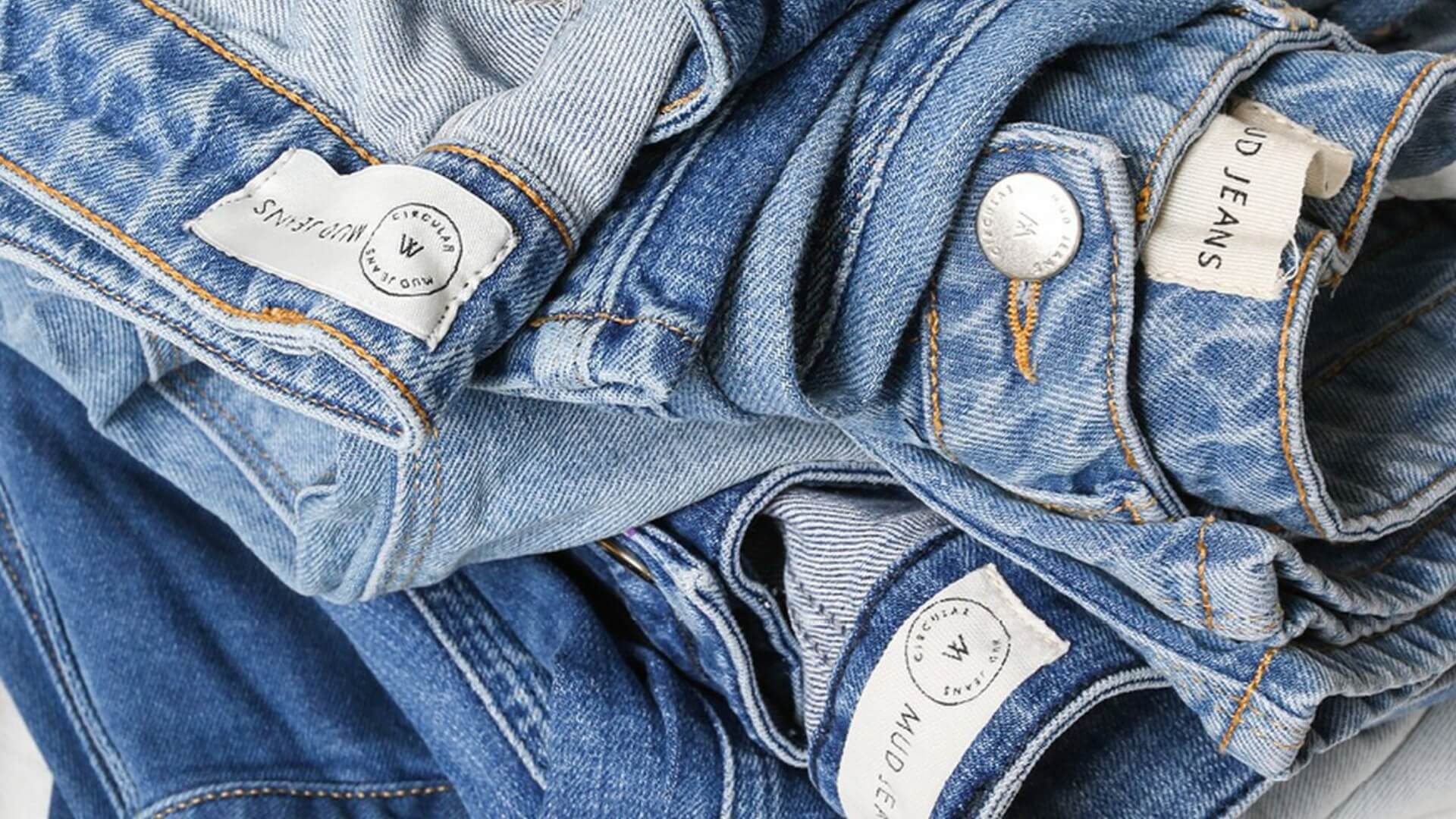
Leasing jeans with MUD Jeans and Shopify
Why make new jeans and waste a lot of resources in the process, when you can make new jeans from existing jeans? Dutch brand MUD Jeans has adopted this alternative approach for 10 years now. Since fall 2020 their webshop runs on Shopify Plus.
CLIENT
MUD JeansINDUSTRY
FashionTECHNOLOGY
Shopify plus webshops KlaviyoPACKAGE
Webshop migration
Services we provided

Migration
Store Development
Email Marketing

Returner
new buying
Completely in line with their goal of circularity, MUD Jeans buys old jeans and turns them into new ones. This is a complex process with a lot of hurdles to overcome, because the rest of the world still sees jeans as a disposable product, instead of a valuable resource. At MUD Jeans, they see it differently. Customers have the opportunity to lease their jeans: people make use of the jeans’ resources for a while, and then give them back again.

Leasing with Shopify,
on- and offline
How do you configure a lease-construction of that type in your webshop? This turned out to be difficult. Co-owner Dion Vijgeboon explains: “Until the fall of 2020 our webshop ran on WooCommerce, where it was hard to get the lease-option the way we wanted it. So we started looking around for something better and ended up with Shopify. Not the cheapest, but certainly the best; exactly what Bob told us when we approached Code.”
For Code, coming up with a good solution for product-leasing was a nice exercise in improvisation. Bob: “We wanted to collaborate with a partner on this and approached some American companies, but for them it wasn’t interesting to make it work with iDeal as well. So we moved the search closer to home, and found the Dutch company Firmhouse.”

Firmhouse is a Product-As-A-Service platform specialised in lease-constructions. They didn’t have a Shopify integration yet, but at Code’s request developed one specifically for Mud Jeans – and then made it available for other clients as well.
A second challenge came along when retailers selling MUD Jeans started asking if they could participate in the lease-program as well. Again a juicy, complex puzzle to solve: how to divide revenue, who receives what, how to register which store handled which transaction?
Code developed an in-store lease system for this: a tablet with a simplified version of the webshop on it where in-store shoppers, after trying on the jeans, can order the one they want to lease. At the checkout they receive a payment request via e-mail, and as soon as it’s payed the order is sent to the customer.

Shopify’s ease of use is so natural to me now that I often forget how bad our previous platform really was.


Professional upgrade
In addition to configuring the lease-program, Code also took care of the rest of the webshop. We made sure visitors would get to what they are looking for in a few clicks, connected Returner to facilitate a smooth returns and exchange process, and built a custom B2B environment in Shopify – including Code’s own IdentitySwitcher app, which enables agents to place orders on behalf of the companies they represent. The results so far are promising: average order value went up 30%, clients return more often, and the CLV (Customer Lifetime Value) increased with 12%.
Do you also want to optimize your return process and stimulate exchanges with Returner?
Recently MUD Jeans also started with our Klaviyo email marketing package. A sustainable brand such as MUD Jeans has a lot of fans and ambassadors, and email marketing is an excellent way to keep that audience engaged by promoting MUD’s alternative to BFCM for instance, where they sell used jeans that are still perfectly wearable, live and online, and donate the proceeds to JustDiggIt. For users of the lease-program, too, it is an ideal way to inform them on the lease every once in a while.
Dion: “The site feels a lot more professional now. The difference with WooCommerce is quite noticeable: when you updated a plugin there, two other plugins would suddenly stop working. These days all sorts of integrations with third parties are a lot easier to realise and manage. You get accustomed to Shopify’s ease of use very quickly, too: it’s so natural to me now that I often forget how bad our previous platform really was.”
Do you want to migrate e-commerce platforms? Learn more about what to expect from a migration project to Shopify.



.png)